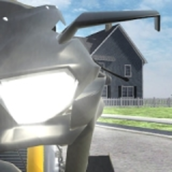Vue中textarea自适应高度方案代码实现方法
本篇文章小编给大家分享一下Vue中textarea自适应高度方案代码实现方法,文章代码介绍的很详细,小编觉得挺不错的,现在分享给大家供大家参考,有需要的小伙伴们可以来看看。
隐藏的问题
抛开原生JS,框架的大部分UI库都支持自适应textarea高度功能,但普遍都忽略了一个功能,就是自适应高度的回显。
使用这些库的时候,我们很容易的在textarea中键入内容,超出范围时会自动延展一行,保证内容高度的自适应。当我们提交内容,在其它页面使用同样的UI来渲染时,麻烦的就来了,有些UI库是不支持自适应回显的,这就需要我们通过行高、行数甚至高度之间的计算得出一个基值,从而实现回显。
解决自适应高度的方案
常见得方案有两种,一种是在页面地“边远地区”添加一个ghost dom来模拟输入换行,这个dom的可能是editable属性为true的div或者是一个一摸一样得textarea。
以element-ui的input组件举例,当我们在组件内输入值时,会调用resizeTextarea方法
resizeTextarea() {
if (this.$isServer) return;
const { autosize, type } = this;
if (type !== 'textarea') return;
if (!autosize) {
this.textareaCalcStyle = {
minHeight: calcTextareaHeight(this.$refs.textarea).minHeight
};
return;
}
const minRows = autosize.minRows;
const maxRows = autosize.maxRows;
this.textareaCalcStyle = calcTextareaHeight(this.$refs.textarea, minRows, maxRows);
}
当设置了autosize为true则textarea设为自适应高度。此时textarea的高度会通过calcTextareaHeight方法实时计算。
export default function calcTextareaHeight(
targetElement,
minRows = 1,
maxRows = null
) {
if (!hiddenTextarea) {
hiddenTextarea = document.createElement('textarea');
document.body.appendChild(hiddenTextarea);
}
let {
paddingSize,
borderSize,
boxSizing,
contextStyle
} = calculateNodeStyling(targetElement);
hiddenTextarea.setAttribute('style', `${contextStyle};${HIDDEN_STYLE}`);
hiddenTextarea.value = targetElement.value || targetElement.placeholder || '';
let height = hiddenTextarea.scrollHeight;
const result = {};
if (boxSizing === 'border-box') {
height = height + borderSize;
} else if (boxSizing === 'content-box') {
height = height - paddingSize;
}
hiddenTextarea.value = '';
let singleRowHeight = hiddenTextarea.scrollHeight - paddingSize;
if (minRows !== null) {
let minHeight = singleRowHeight * minRows;
if (boxSizing === 'border-box') {
minHeight = minHeight + paddingSize + borderSize;
}
height = Math.max(minHeight, height);
result.minHeight = `${ minHeight }px`;
}
if (maxRows !== null) {
let maxHeight = singleRowHeight * maxRows;
if (boxSizing === 'border-box') {
maxHeight = maxHeight + paddingSize + borderSize;
}
height = Math.min(maxHeight, height);
}
result.height = `${ height }px`;
hiddenTextarea.parentNode && hiddenTextarea.parentNode.removeChild(hiddenTextarea);
hiddenTextarea = null;
return result;
};
我们可以看到
if (!hiddenTextarea) {
hiddenTextarea = document.createElement('textarea');
document.body.appendChild(hiddenTextarea);
}
element-ui创建了一个textarea的dom,通过calculateNodeStyling方法将真正的textarea的样式复制给hiddenTextarea(overflow不同步,真正的textarea是为hidden)。接着监听textarea的输入值,同步给hiddenTextarea。同时将hiddenTextarea的scrollHeight同步给textarea的高度,最后再将dom销毁掉。
关于样式的同步,element这里用了getComputedStyle和getPropertyValue这两个API。当然,如果你自己封装的话,也可以使用css预处理器的mixin。
第二种方案与第一种方案类似,不过不会创建额外的dom。以开头的vue-awesome-textarea举例:
init() {
this.initAutoResize()
},
initAutoResize () {
this.autoResize && this.$nextTick(this.calcResize)
}
在页面mounted或者内容变动且开启自适应高度autoResize的时候,执行this.calcResize方法。
calcResize() {
this.resetHeight()
this.calcTextareaH()
},
resetHeight() {
this.
},
calcTextareaH() {
let contentHeight = this.calcContentHeight()
this.px'
if (this.needUpdateRows(contentHeight)) {
this.updateRows(contentHeight)
}
this.oldContentHeight = contentHeight
},
calcContentHeight () {
const { paddingSize } = this.calcNodeStyle(this.$el)
return this.$el.scrollHeight - paddingSize
},
resetHeight()是来初始化textarea的高度,默认为auto。calcTextareaH()方法是用来计算内容区域的高度(textarea的scrollHeight减去padding的高度),同时将计算好的高度实时同步给textarea的高:
this.px'
相比方案一,这个方案采用的思路相同(动态修改高度),但是减少了额外的dom创建和销毁的过程。
此外,vue-awesome-textarea还支持在自适应的过程中回调行数,可以更好的支持数据回显。实现的方法也很简单:
computed: {
...
oneRowsHeight() {
return this.calcContentHeight() / Number(this.rows) || 0
}
...
}
在computed中我们计算出单行的高度,同时在执行this.calcTextareaH()方法时我们记录下内容高度:
this.oldContentHeight = contentHeight
接着我们会比对是否存在添加行操作,一旦添加则新的内容高度和老的内容高度会不同:
needUpdateRows(newContentHeight) {
return this.oldContentHeight !== newContentHeight
},
此时我们会把最新的行高emit到组件外部:
updateRows(contentHeight) {
this.$emit('getRows', Math.round(contentHeight / this.oneRowsHeight))
}
相关文章
精彩推荐
-
 下载
下载摩托车销售模拟器内置菜单中文版
模拟经营 摩托车销售模拟器内置菜单中文版摩托车出售模拟器,又名摩托车销售模拟器,这是一个以摩托车销售
-
 下载
下载船舶模拟2020最新版
模拟经营 船舶模拟2020最新版船舶模拟2020是玩法非常有意思的模拟驾驶游戏,高清3d画质
-
 下载
下载油管主播的生活2内置菜单版
模拟经营 油管主播的生活2内置菜单版油管主播的生活2内置菜单版是一款模拟养成类游戏,在这里你将体
-
 下载
下载网吧老板模拟器2手机版
模拟经营 网吧老板模拟器2手机版网吧老板模拟器2是非常受欢迎的模拟经营题材手游,在原本的基础
-
 下载
下载美国警察模拟器巡警2024最新版
模拟经营 美国警察模拟器巡警2024最新版美国警察模拟器是一款好玩的模拟手游,游戏中你将扮演一位警察,















